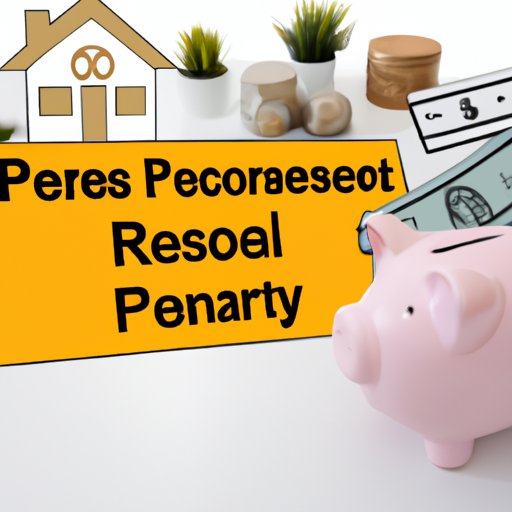Introduction
As people age, their needs change. For many elderly individuals, living alone is no longer an option due to physical or mental health issues. Retirement homes provide a safe, comfortable environment where seniors can receive the specialized care they need while still maintaining some independence. But how much does a retirement home cost? This article will explore the various costs involved, factors that affect prices, financial benefits, and ways to save money when selecting a retirement home.
Comparing Retirement Home Costs Around the Country
The cost of living in a retirement home varies from city to city. According to the 2017 Cost of Care Survey by Genworth Financial, the national median cost for a one-bedroom unit in an assisted living facility is $3,750 per month. That number can vary greatly depending on the region. For example, in New York City, the median cost is $5,500 per month, while in the Midwest it is closer to $3,400 per month. Additionally, certain states have higher taxes and more expensive housing markets which can also increase the cost of living in a retirement home.
Breaking Down the Cost of Retirement Home Living
When considering the cost of retirement home living, there are several fees and expenses to keep in mind. The initial fee is typically a nonrefundable deposit that covers the cost of move-in and administrative fees. This amount can range anywhere from $1,000-$5,000, depending on the type and size of the room. After the initial fee, there is the monthly fee which covers the cost of rent, utilities, meals and housekeeping services. Depending on the services offered, this amount can range from $1,500 to $10,000 per month. Additionally, some retirement homes may charge extra for additional services such as transportation, laundry, beauty services, and other amenities.

Exploring Factors that Affect Retirement Home Prices
The cost of living in a retirement home is affected by several factors. The size of the room is one factor. Smaller rooms are typically less expensive than larger ones. The age of the home is another factor to consider. Older homes tend to be less expensive than newer ones, but they may require more maintenance and repairs. The quality of care is also important. Facilities that offer specialized services such as physical therapy, memory care, and skilled nursing will typically charge more than those that do not. Finally, the cost of living in a retirement home can vary based on the services and amenities offered.

Understanding the True Cost of Retirement Home Care
When budgeting for retirement home living, it is important to consider both the upfront costs and the ongoing expenses. The upfront costs include the initial fee and deposits, as well as any moving expenses. Additionally, there are ongoing expenses such as the monthly rent, utilities, meals, and housekeeping. It is also important to factor in additional services and amenities that may be required. These costs can add up quickly and should be taken into consideration when budgeting for retirement home living.
Examining the Financial Benefits of Retirement Home Living
In addition to providing a safe, comfortable environment, retirement homes can offer several financial benefits. Some states offer tax advantages for seniors who live in retirement homes. Additionally, caregivers are often provided to help with daily activities such as bathing, dressing, and meal preparation. This can reduce the burden on family members who would otherwise have to provide these services themselves.

Investigating How to Save Money When Choosing a Retirement Home
When selecting a retirement home, there are several ways to save money. Research different options in the area to compare costs and services. Negotiate terms with the facility to get the best deal possible. Look for discounts and specials that may be available. Finally, ask about any government programs or assistance that may be available to help offset the cost of retirement home living.
Conclusion
Retirement homes can provide seniors with the safety, comfort, and care they need. However, it is important to understand the true cost of retirement home living. Costs vary based on location, size, age, and the services offered. In addition to the upfront costs and monthly fees, there are also financial benefits such as tax advantages and caregiver support. By researching different options, negotiating terms, and seeking out discounts, seniors can save money when choosing a retirement home.
(Note: Is this article not meeting your expectations? Do you have knowledge or insights to share? Unlock new opportunities and expand your reach by joining our authors team. Click Registration to join us and share your expertise with our readers.)
